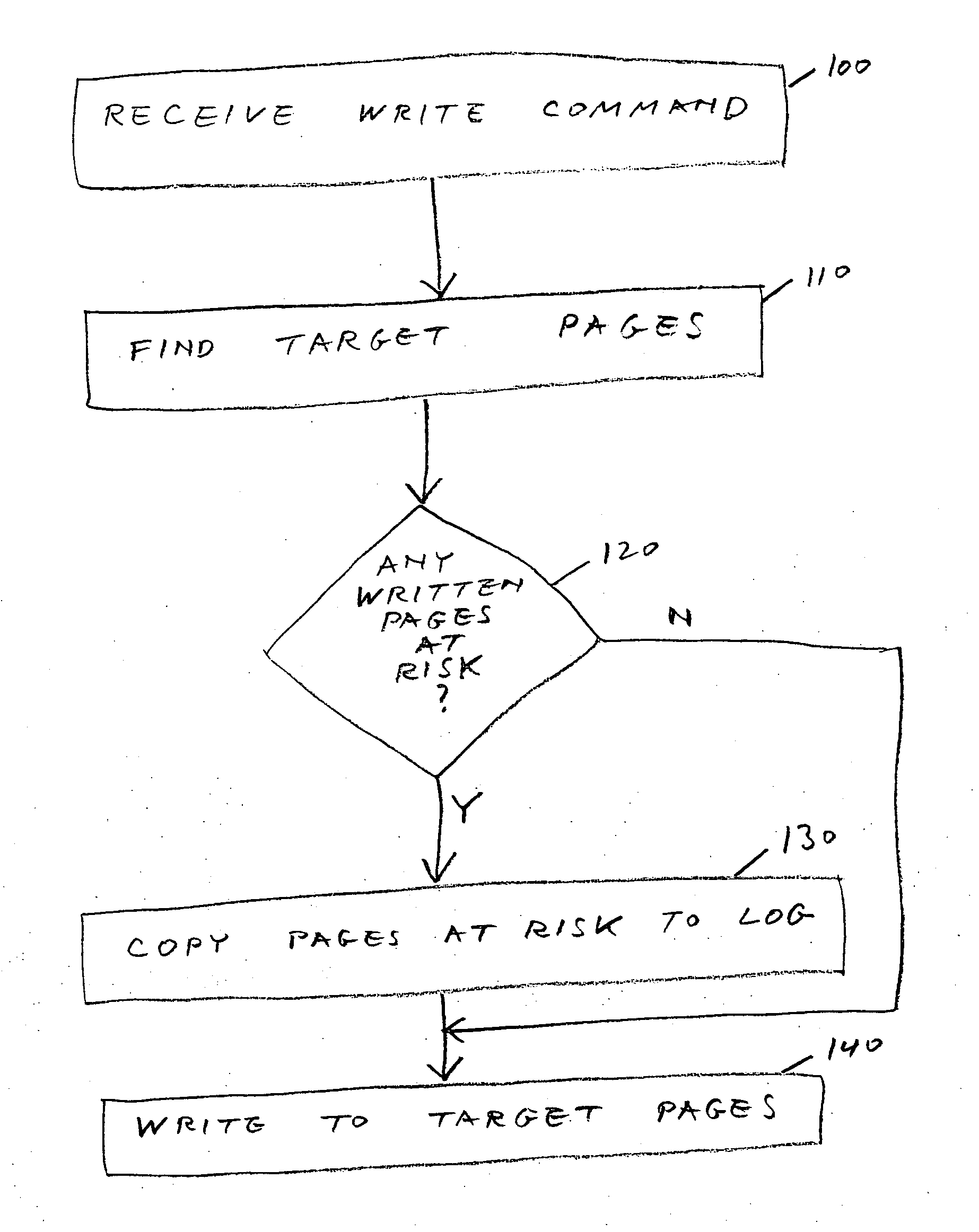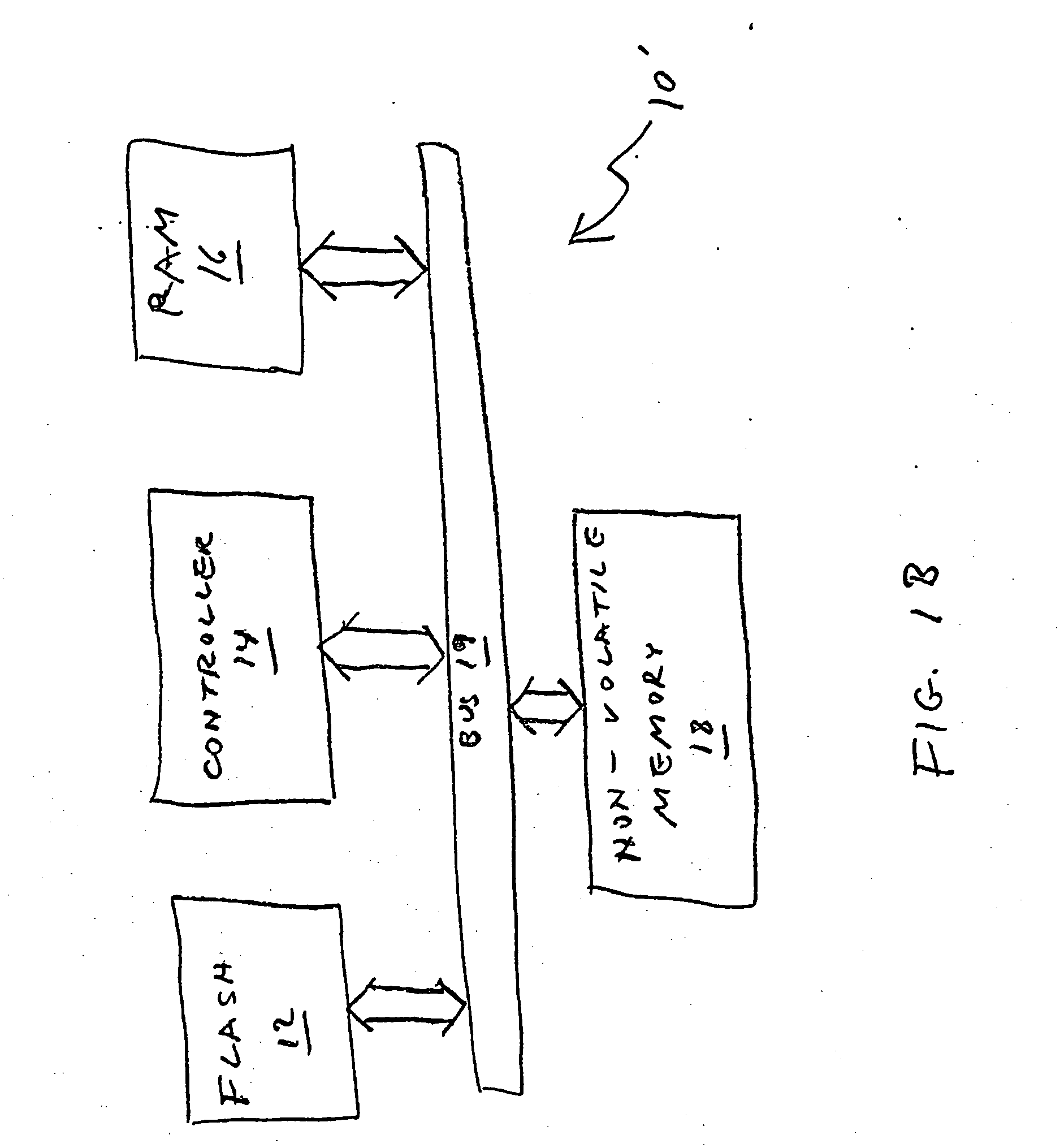Flash memory management method that is resistant to data corruption by power loss
a technology of flash memory and power loss, applied in the direction of digital storage, error detection/correction, instruments, etc., can solve the problems of erratic or unpredictable interruption of operation, data integrity of devices, and limited writing algorithm to write new pages
- Summary
- Abstract
- Description
- Claims
- Application Information
AI Technical Summary
Benefits of technology
Problems solved by technology
Method used
Image
Examples
Embodiment Construction
[0051] The present invention is of a method of managing a page-based memory so as to prevent the corruption of data in previously written pages by an interrupted write operation. Specifically, the present invention can be used to manage flash memories with multi-level cells.
[0052] The principles and operation of memory management according to the present invention may be better understood with reference to the drawings and the accompanying description.
[0053] We again refer to FIG. 2, but now take an example in which the rules defining the risk zones are different than before—the risk zone of page number N of a block is composed of pages N-2 and N-2 (except for the first two pages of the block—the risk zone of page 1 is page 0 and the risk zone of page 0 is empty). It should be emphasized that the risk zones of different pages need not all be the same size as is the case for pages past page 1 in the above example. It may be that some pages have a risk zone of two pages, while other...
PUM
 Login to View More
Login to View More Abstract
Description
Claims
Application Information
 Login to View More
Login to View More - R&D
- Intellectual Property
- Life Sciences
- Materials
- Tech Scout
- Unparalleled Data Quality
- Higher Quality Content
- 60% Fewer Hallucinations
Browse by: Latest US Patents, China's latest patents, Technical Efficacy Thesaurus, Application Domain, Technology Topic, Popular Technical Reports.
© 2025 PatSnap. All rights reserved.Legal|Privacy policy|Modern Slavery Act Transparency Statement|Sitemap|About US| Contact US: help@patsnap.com



